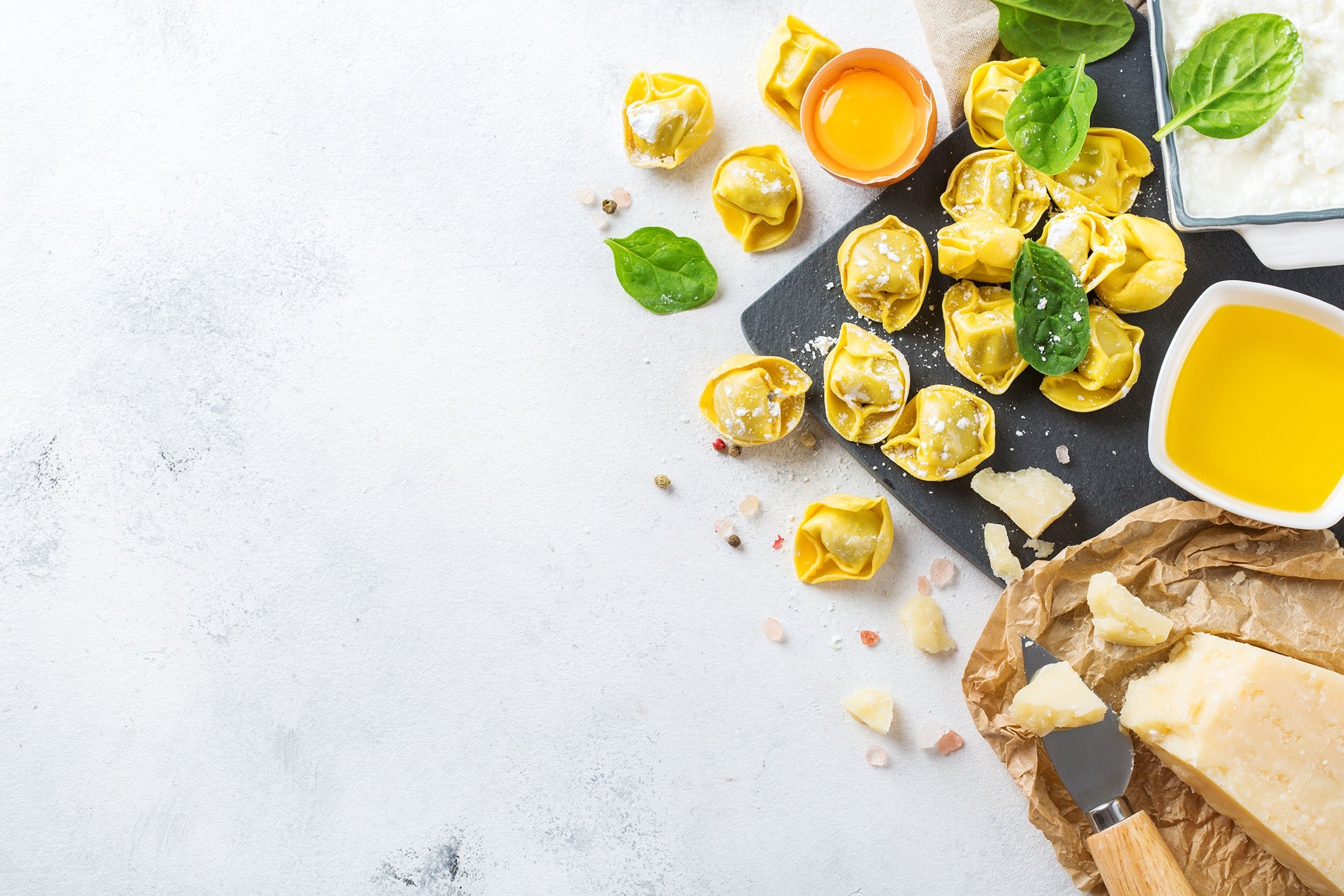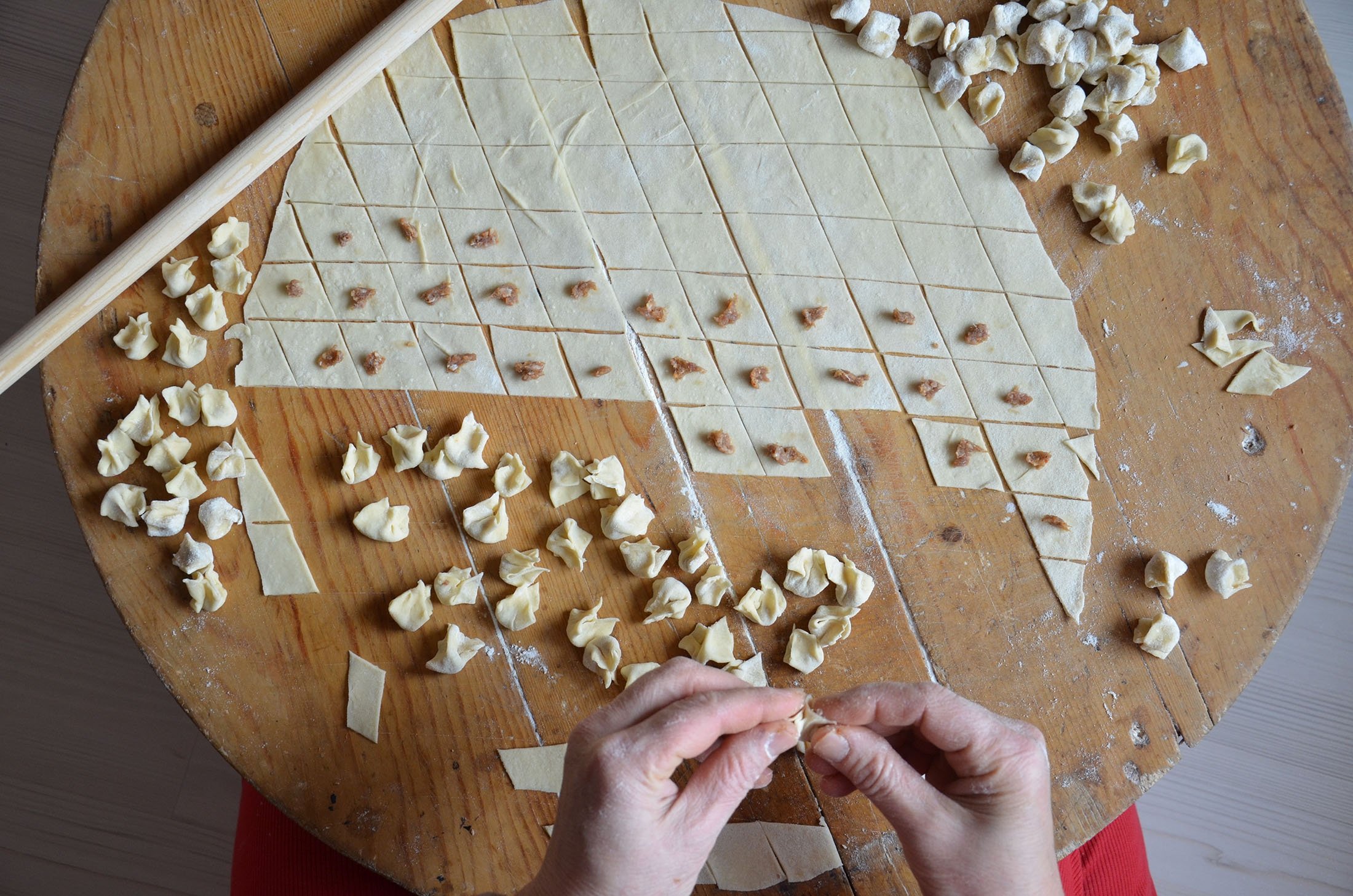© Turkuvaz Haberleşme ve Yayıncılık 2026
There is a saying that mantı, the traditional pasta dumplings stuffed with meat, should be so tiny that 40 of them should fit onto a spoon – at least that's the "proper" way to do them, they say. Either someone had too much free time on their hands or the spoons were simply much bigger “way back when.” I suppose it is a bit of both.
Just one day before Feb. 14, Valentine’s Day, the stuffed Italian pasta tortellini has its own day of celebration, which makes it all the more a great occasion to celebrate both the Italian and Turkish versions of this doughy delight. Tortellini are said to come from the Italian region of Emilia, and in particular, Bologna and Modena, and are traditionally stuffed with a mix of meat, some cheese, egg, nutmeg and some broth. If cheese, spinach or other leafy greens fillings are used, they are referred to as tortelloni. Meanwhile, mantı is a specialty of the central Anatolian province Kayseri and is mainly stuffed with meat, onions, red pepper flakes and black pepper. After cooking, it is usually served with garlic yogurt and a spicy butter sauce. As much as Gaziantep is known for its cuisine and even recognized as such internationally, Kayseri is aiming for the same recognition when it comes to mantı.
Though best keep in mind that there are quite a few other variations of these dumplings. Ravioli are a bit different, so are ravioletti. For mantı goes the same. There is the Bosnian mantı, which is more like a börek but still served with yogurt, and the Uzbek kind, which is pretty close to tortellini but can be even bigger.

Making pasta from scratch is quite simple once you get the basics down, so essentially you have two recipes in one here. I did say that the traditional filling is with meat but to balance the taste with the mantı I’m going for a mushroom filling here and deviating from the Emilia classic.
Ingredients
For the dough
For the filling
Instructions

Chop the onions and garlic and saute them until they have softened and add the chopped mushrooms in as well. Cook until they get a bit of color and season to your liking. Let them cool off completely before adding the soft cheese and mix until fully incorporated.
As for the dough, you’ll need to mix the ingredients and knead your heart out. There is nothing much else to say about it here. If the dough is a bit too hard or does not form well or stick together (as egg sizes can vary and the type of flour can change the outcome) you can carefully pour a bit of water and continue kneading. But you’ll want to have a firm dough.
Roll out the dough as thin as you can and cut with a small glass or a bigger round cookie cutter. Place a bit of the filling – I cannot stress this enough, do not overfill – and fold the dough carefully. Close off the seams well. You can call it a day at this point but if you want to go fancy, you can carefully spread the filling inside and create a ring shape by first folding it in half and then combining both ends together around your ring finger. (Legend has it that Venus, the goddess of love, inspired the shape with her navel after a local innkeeper took a peek at her through the keyhole of her room's door.)
However, for ease of making and to stick to tradition, you can make it in a square shape. Round cutters and objects are the most available shape in almost every home, and squares might lead to different sizes. The round version also stays the same size, hence my suggestion.
Cook for about five to seven minutes in salted water and serve!
Tips
Serving these with a variety of sauces is a must. The most popular choices are pesto, tomato sauce, creamy alfredo or garlic butter sauce with some sage. But I'd advise trying them plain and then experimenting with different sauces.
You can make a lot in one go and keep them for a few days in the fridge and for several months in the freezer, making it great for a surprise and handmade addition to your dinner table. Just keep in mind that these times will vary according to the kind of filling you have used. Mushrooms don't handle being frozen well, but cheese or meat will not be an issue.
If the tortellini felt like a hassle, you might find mantı a bit tedious. Personally, we turn mantı-making into a full-day activity with my aunts, making large batches while chatting the day away. Once we’re done, we each get a good portion to eat and a big portion to bring home to put in the freezer. Of course, the sizes of the individual mantıs are up to you, but the traditional way of going about this is the smaller the better!
Ingredients
For the dough
For the filling
Instructions

Add the egg and salt to the flour and gradually add the water until you get a firm but malleable dough. Like with the tortellini, you will need some elbow grease for this. For the filling, chop the onions as finely as possible or directly grate them into your pan. Add the meat into the onions, sprinkle with seasonings and mix it until all the ingredients have combined.
Roll out the dough as thinly as possible and cut out squares in the size you desire. Put a tiny bit of the meat filling right in the middle and start folding them up, like a paper fortune teller. Like with the tortellini, you can shape them however you like; while the most common shape for mantı is either a simple triangle or the four ends pinched together.
Once ready, cook your mantı for five to seven minutes in salted water and serve with some garlic yogurt.

Tips
People love to garnish this yogurt-covered pasta by pouring melted butter and fried red pepper flakes on top. There are many different, and usually spicy, sauces that can be added to complement mantı, but one of my favorite ways to eat them is to sprinkle them with plenty of dried mint. You could also make a simple tomato sauce with garlic to drizzle on top.
Some people like to make soup with mantı called “Yüksük Çorbası.”
